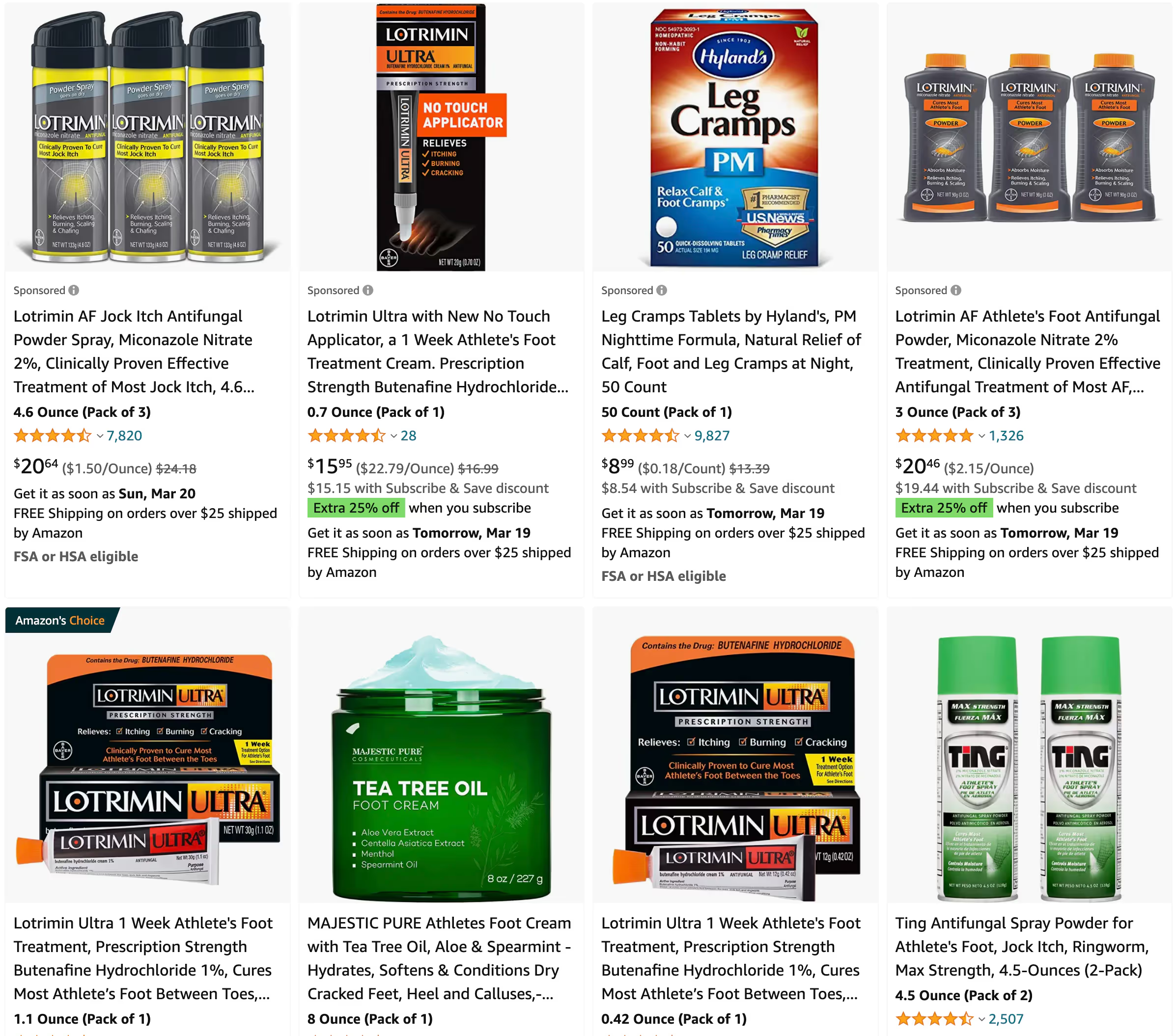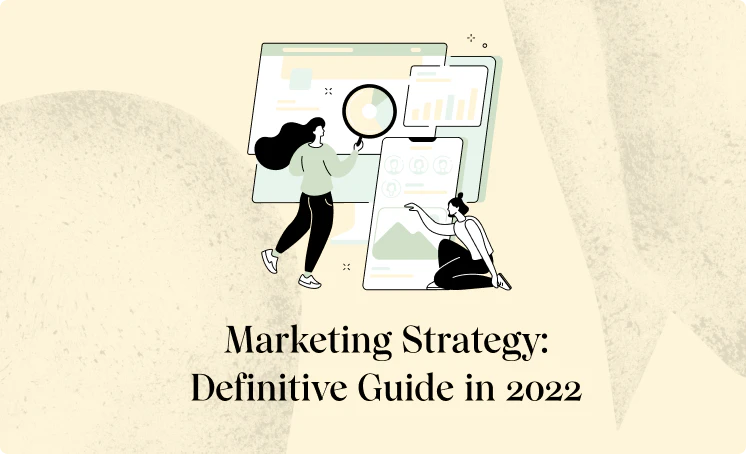Introduction
Amazon PPC offers businesses the opportunity to get their products in front of customers without having to try to drive traffic from outside sources.
But with all the competition on Amazon, that traffic isn’t handed to you.
To be successful at this point, you’ll need to have a well-planned Amazon PPC strategy to stay one step ahead of your competitors.
In this article, I’ve compiled 22 strategies you can use to increase your sales through Amazon PPC.
Organic vs Paid Sales
A few notes before we dig into Amazon PPC strategy.
While the information covered in this article is to help optimize your PPC campaigns, you can’t rely on ads entirely to get sales.
You need to aim to be using ads to build your organic ranking. Try to build toward 70-75% of your sales happening organically to maintain healthy profit margins.
When you are setting up your ads you’ll want to make sure you stay on track budget-wise.
Automatic campaigns often come with a lower cost but target broad keywords that may not perform as well. With manual campaigns, you have more control because they allow you to have precision when bidding, and you’re able to target the most relevant long-tail keywords.
Both have a place in your overall PPC strategy, but most sellers opt to have more manual campaigns than automatic (up to 90% for some).
Now that you have an end-goal in mind, let’s look deeper at PPC strategies you should try today.
22 Amazon PPC Strategies For You To Test
1. START HYPER-FOCUSED, MOVE-TO BROAD WITH KEYWORDS
This strategy is ideal for anyone launching a new product or just beginning as an Amazon seller.
When starting out you can’t jump in and compete on broad keywords. Your budget would quickly be eaten up with nothing to show for it.
To start, you need to target long-tail keywords that are easier to bid for since you can’t afford to compete with the best-sellers in your niche.
As an example, you’d want to start with a keyword like “black leather desk mat”. Bid for since you can’t afford to compete with the best-sellers in your niche.
Once you gain some traction with precise long-tail keywords, you can start to target more broad keywords such as “leather desk mat” or “desk mat black”.
With this strategy, you’ll continue to slowly expand your keywords as you get sales and healthy ROI.
The final step will be to compete for the general, most-searched phrases that are the most expensive to bid for. “Desk mat” would be a broad keyword to bid on in this final stage.
As you start to go broader in your campaigns, be sure you are paying attention to the keywords that performed the best in previous campaigns to give yourself the highest chance for success.
Don’t go from “black leather desk mat” to untested “mouse pad” just because it has a higher search volume.
2. RANK OPTIMIZATION
The next strategy involves paying special attention to where your product listing is ranking.
You’ll want to focus on changing your keywords and bidding according to what page of the results your listing is showing.
First, you’ll identify your highest performing keywords for each listing and track their current ranking.
If your listing is showing past page 5, you’ll want to narrow your focus to only the keywords that are getting you sales. Bid modestly while conversions and reviews build-up to help improve your ranking.
If your listing is showing on pages 2-5, then you’re starting to gain traction. Continue to bid consistently to create momentum and let Amazon continue to optimize over time. You don’t want to deplete your ad budget and have to stop running campaigns as you’re starting to move up.
But once your listing is on pages 1-2, now you can start to bid more aggressively on your top-performing keywords to fight to get into the top spots.
Once you reach page 1 or 2 in the results, you may want to start additional campaigns for other keywords that show promise. You can start going back through these same steps until your product has a strong ranking for multiple keywords.
Watch for keywords that are burning through your ad budget by getting clicks but not conversions. Add them to your negative keywords.
3. AMAZON PRODUCT DISPLAY ADS
Product Display Ads can take on more than one strategy.
The first focuses on displaying additional products on your own product pages.
If you sell phone cases, but also screen protectors, phone cleaning kits, and phone charms, then you can use Product Display Ads on your own pages for products that go well together to increase your average order value.
The other strategy is to use Product Display Ads on your direct and indirect competitors’ pages.
You can target indirect competitor pages that sell complementary products to yours. For example, they sell screen protectors that are compatible with your phone cases.
Or you can target direct competitors, like another seller of phone cases, so you can try to pull some of their customers to your product instead.
You could also choose to run three different campaigns targeting each type of page and test what works best for your product.

4. AD PLACEMENT BID ADJUSTMENTS
To use this strategy, you first need to remember that your ad can show:
- At the top of the search results.
- Various other spots within the search results ranging from the middle of the first page to the second page and beyond.
- On product, add to cart, and other pages.
Your ad is likely performing in one placement better than others.
Amazon allows you to adjust your bid for each ad placement depending on where you see the best results per your placement report.
You can adjust your bid by a multiple of 0-900%.
How do you choose what multiple to use? Well, that requires some testing.
You should start moderate. You can also build up from there based on your results.
You’ll want to consider the current ACoS of the ad as well. If it’s low enough, you can set the multiple higher.
5. TRY GROUP VARIATIONS
Sellers with multiple variations of one product face the chance of keyword cannibalization if they run ads for each child ASIN.
To avoid this, and as an added perk, increase your average order value, you can test grouping your variants together and selling them as a pack.
This way you are only running ads for one product technically, which is better for your PPC budget, but you’re building awareness amongst your customers for each of your individual products as well.
Let’s say you sell exfoliating soap in 3 different scents. You would add a product listing for a set that includes one of each and run your ads to that listing.
The customer gets the added benefit of learning the different products you offer and you get the benefit of not wasting your PPC budget on running three different ads that may be competing against each other.
The benefits of this strategy will organically filter down to your individual soap product listings as customers who see the ad and just want one of the soaps will now know to go find it, and customers that order the set but find a favorite will then return to order on the individual listing as well.
6. RUN CAMPAIGNS FOR YOUR TOP VARIATION
If grouping your variations isn’t something you want to do, you can instead focus your Amazon PPC budget on your best-selling variant.
By focusing on your top seller, you are setting your ad up for the highest chance of success since you already know your customers will buy the product, but you’re also helping to improve your other variations’ rank as well.
Maybe your cucumber soap is your best seller, so you run your ads for that, but when your customer lands on the page, they see you offer two other scents.
If one of the other scents is more appealing to them, or they want to try a new product, they may order that variation regardless of what the ad they clicked on was for.
For this strategy to work, you’ll have to have your variations set up as child ASINs of course, but it can work for a wide variety of products.

7. ONLY GROUP PRODUCTS SIMILAR IN PRICE TOGETHER
If you sell a range of similarly priced products sprinkled with a few high-end products, consider separating your high-end products into their own PPC ad groups.
Higher cost items generally require more of your ad budget to get conversions.
If you’re running your high-end item in the same ad with your other products, you are probably raising the ACoS on your lower-priced products.
Try instead to group products that are close in price together, then separate the higher cost items on their own. This allows you to monitor your ad spend for your higher cost items more easily as well.
For instance, if you sell vacuums and vacuum 1 is $50, vacuum 2 is $65, and vacuum 3 is $140.
You would continue to run vacuums 1 and 2 in the same ad group, but you’d set up a separate ad group for vacuum 3 to optimize your budget for the varied pricing tiers.
8. STRUCTURE CAMPAIGNS BASED ON PRODUCT PERFORMANCE
When building out PPC campaigns, sellers often group their products based on high-converting product keywords.
However, within the same keyword, some product variations get more click-throughs and conversions than others.
This means that the higher-performing products are having their ad costs inflated by the lower performing products in the campaign.
To avoid this, identify what products are the top performers, then create a separate campaign for them. This allows you more control over ad costs and improves your overall ad spend.
This strategy will also improve the ranking of the top-performing products more quickly.
When your high and low-performing products were grouped in a campaign, it brought down the average click-through and conversion rates, which Amazon’s algorithm takes into consideration when determining a product’s ranking.
Now that the high-performing products are pulled out onto their own campaign, the metrics will be higher and will lead to a more favorable product ranking.
9. IMPROVE THE PERFORMANCE OF YOUR LOW-PERFORMERS THROUGH PRODUCT TARGETING
If you haven’t tested Product Targeting ads yet, you should start now.
It may seem similar to Product Display Ads, but it adds more control over where the ads show. Through Product Targeting Ads you can target specific ASINs.
This strategy uses this added feature to your benefit.
What you’ll want to do is let your low-performing products piggyback off your high-performing products.
To do this, you’ll set up a Product Targeting campaign targeting the ASIN of your high-performing product for your low-performing product resulting in your low-performer being shown to the traffic your high-performer is getting.
Other benefits of using Product Targeting Ads on your own listings are that they build your brand by getting more of your products in front of your customers, and they keep your competitors from showing up on your pages instead.
10. TARGET PRODUCTS THAT APPEAR IN GOOGLE/FACEBOOK ADS
Product Targeting Ads don’t just allow you to target your own ASINs though. They allow you to target your competitors’ products as well.
You most likely have competitors that are spending money outside of Amazon PPC to drive traffic to their products. You’ll see their ads pop up through Google AdWords and Facebook.
You can now use this to your advantage.
To do this, you’ll set up Product Targeting Ads for those products ASINs, effectively borrowing the traffic they’re paying for to boost your audience reach.
11. GET TO KNOW THE BUYING BEHAVIOR OF YOUR CUSTOMERS
Performing competitor research for your ads is just one part of your strategy to expand your audience reach.
You’ll also need to do audience research to understand your customer’s buying behavior.
What are their interests? What time do they shop? What products do you sell that would support any of their other purchases?
You then can use this information to set up things like Ad Scheduling and Product Display Ads to reach your customers.
If you want to reach busy professionals, you know you need your ads to run in the evenings when they are home from work.
If you want to reach new moms, you can target other baby products with display ads to show up on the listings they are already clicking-through to with complementary products.
This strategy can be paired with any strategy on this list to improve your Amazon PPC campaigns.
12. TARGET ALTERNATE KEYWORDS AS PART OF YOUR AMAZON PPC STRATEGY
A creative strategy you can test for your PPC ads is to target keywords that are related to your product and are problem-solution oriented.
Customers aren’t always aware of the specific product they need, but they are aware of their problem, so that’s what they search for instead.
For example, if you sell an anti-fungal cream that helps with athlete’s foot and other rashes you could target the keyword “athlete’s foot” or “foot rash treatment” as an alternative to “anti-fungal cream”.

You’ll want to test these alternative keywords in a separate campaign as an additional strategy to your main keywords that are product-focused.
These types of keywords should only be a small portion of your overall ad spend, but they can help get your ad in front of a new audience and give you fresh ideas for keywords you could add to your product listing if they perform well.
13. EXPERIMENT WITH DIFFERENT BIDS AND MATCH TYPES
As with any marketing, testing different variables to find what works the best is recommended.
Don’t be afraid to test manual vs automatic campaigns, varying bids, or switching out exact match keywords for phrase match keywords.
In general, broad keywords perform better in automatic campaigns than phrase or exact match keywords, but other than that, everything else should be tested.
You will want to set up multiple campaigns with the same keywords but different keyword match types or bids, then observe what campaign has the best results. You’ll then want to take the winner and test another variable.
You’ll want to watch the performance of your keywords, ACoS, CTR, and overall ad performance of each campaign to start identifying a pattern of what works.
14. LOWERING BIDS ON LOW PERFORMING BUT HIGHLY RELEVANT KEYWORDS
When using high-volume search, broad keywords don’t be afraid to bid low and give them a chance.
Since these keywords are competitive, they don’t always perform as well as other keywords, so sellers are quick to add them to their negative keywords list before testing them to improve their results.
Before ruling out a high volume search keyword try to lower your bid by 20-30% and see if the results improve.
The keywords with high volume searches are too valuable to completely rule out without at least trying different strategies first.
15. USE BROAD, PHRASE, AND EXACT MATCH TYPES IN AMAZON PPC CAMPAIGNS
You should be testing different types of keywords in your ads to determine what type of keywords perform the best for your product.
To briefly review the keyword types there are:
- Broad match keywords will allow your product to show in the search results for your keyword or related close variants.
- Phrase match keywords will show if your phrase is within the search term, allowing for extra words before or after.
- Exact match keywords will only show in results if your exact words are searched for.
Exact match keywords will have the highest priority to be shown in the results, but it’s also the most expensive. Phrase match keywords aren’t as direct and are also easier on your budget.
Broad match keywords have the widest reach and are good for finding new variations of your keywords.
The competitiveness of your keyword word will play a major role in how each type of keyword will perform for you.
16. NEGATIVE MATCHING IRRELEVANT KEYWORDS
When working with Amazon PPC ads you need to remember that the algorithm needs as much guidance as possible to optimize your listing.
This means that in addition to telling Amazon what keywords you want to show up for, you’ll need to let Amazon know what keywords you don’t want to show up for.
Your negative keywords can be either negative phrase match or negative exact match keywords.
You cannot set broad match negative keywords.
Some examples of good negative keywords are:
- Low CTR non-converters
- High spend non-converters
- High click non-converters
To find these keywords, you’ll want to review your search term report regularly and continue to add negative keywords as needed.
Don’t get too overzealous with negative keywords though, you don’t want to rule out a keyword that could have improved with a minor tweak or two.
17. AMAZON SPONSORED BRANDS
If you are part of the Amazon Sponsored Brand registry then you have the option to run the Sponsored Brands ads.
What is great about these types of ads? The on-page real estate they provide.
These ads allow you to display multiple products at one time, getting your brand more exposure.
Since multiple products will display together, it’s important that you sell related products and that you only include products together that make sense for the campaign otherwise these types of campaigns likely won’t provide strong results.

Amazon Sponsored Brand ads are hard to miss, so they are ideal for building brand awareness and finding new customers.
Again, if building a brand around a specific product category isn’t a goal of yours, then this isn’t a strategy for you.
18. USE AMAZON NEW-TO-BRAND METRICS
Another benefit of being in the Amazon Brand registry and using Amazon Sponsored Brand Ads is the data that it provides to you.
Amazon will tell you what percentage of your customers are new and what percentage are recurring.
You can then develop a marketing strategy targeted to each segment and budget accordingly.
For instance, if most of your customers are new, then you can develop strategies, like remarketing ads, to turn more of them into recurring customers since it’s more cost-effective to keep a customer than gain one.
19. BRANDED KEYWORDS CAMPAIGNS
Branded keyword campaigns aren’t for everyone. Some Amazon sellers are not as interested in building a known brand.
Even Amazon sellers that are building a brand will not be ready for this strategy if they are just starting as it requires you to have a recognizable brand that shoppers may be searching for.
You’ll want to create a campaign only for your branded keywords and any variations your customers may be looking for, such as misspellings.
Generally, you won’t want to use broad match keywords in this campaign.
Some sellers don’t like to set up branded keyword campaigns as they assume that if someone is entering their brand in the search bar then surely they will buy from them, but people buy from competitors all the time if they can entice them enough.
If you’re an established brand and don’t bid on your branded keywords, then your competitor can. This gives them the chance to convert your customer.

20. REMARKETING AMAZON PPC ADS
If you’re familiar with PPC ads on other platforms like Google and Facebook, then you know about retargeting ads.
But if you aren’t familiar, they allow you to target the shoppers who viewed your product page on a network of 3rd party websites and apps.
Amazon PPC offers their own version of this, but they refer to them as “remarketing” ads.
Remarketing is a powerful way to build your brand and has been proven to have click-through rates up to 10 times higher.
It’s worthwhile to test these remarketing ads against your other campaigns and see if they are a good fit for your product, especially if you are trying to further your brand awareness.
21. USING AUTOMATIC CAMPAIGNS TO FIND THE RIGHT BID AMOUNT
Many Amazon sellers don’t like to use automatic campaigns as they don’t allow the seller as much control as manual campaigns do.
While this makes sense, it can also result in bidding too high on your keywords.
One way to find the right bid amount? Run multiple automatic campaigns (3-5) at once at varying bid amounts to find the optimal bid to use in your manual campaigns.
You might have been bidding too high all along!
If you are setting your bid amount and not giving it another thought, you could be unnecessarily wasting your ad budget.
Better to test than to be sorry.
22. AUTO-CAMPAIGNS TO AVOID MISSED OPPORTUNITY
This strategy is an add-on to your other campaigns. It’s designed to catch opportunities at a lower cost.
The idea is that for each product you’ll create a very low bid automatic campaign to not miss keywords that are falling through the cracks.
Amazon can sometimes find keywords that you’re missing.
Some products get decent results from this strategy, others not as much.
You’ll need to test it for your products. If you don’t get worthy results after a few weeks, you can always turn off the campaigns.
Summary
There you have it — a comprehensive list of Amazon PPC strategies for you to start trying today.
From testing your keyword strategy to remarketing to borrowing your competitor’s audience, there are multiple strategies for every Amazon seller.
When working with PPC ads there is always something new to test and improve on.
After reading this article, you won’t be short on ideas to test next!
Trust your Amazon business to a 7-figure Amazon Marketing Agency that will help your brand growth in the next 90 days.














.webp)

.webp)








.webp)










































.webp)





